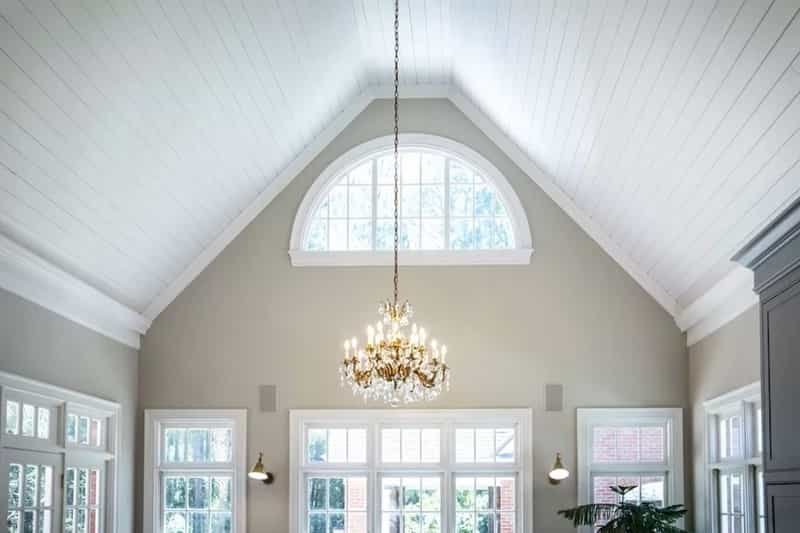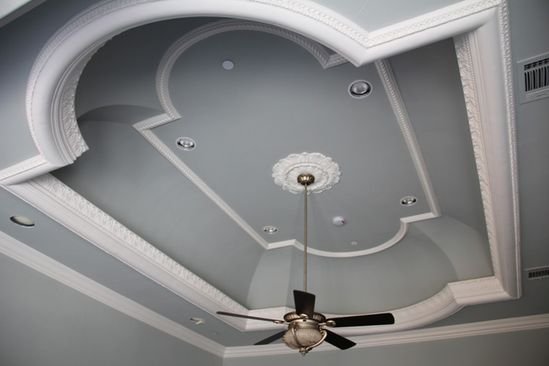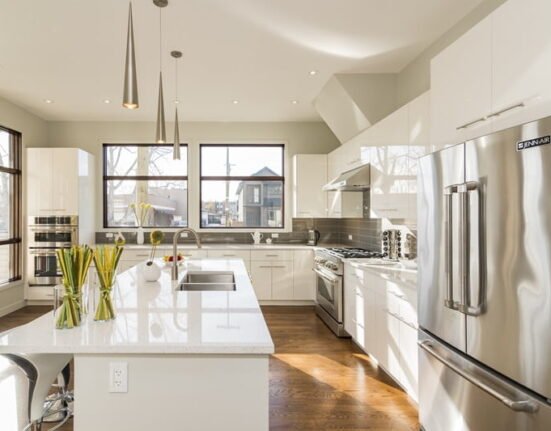Ceiling is like a canopy. Interesting it may sound but the reality is, there are different types of ceiling though we are familiar with only a few. Understanding your options will help you choose the right kind that you like and can easily afford.
What Should Guide Your Choice of Ceiling?
The type of ceiling you should choose depends on different factors such as available space, your design preference and budget. Do you prefer a ceiling that reflects an eye-catching and elaborate design that goes beyond serving the known purposes and basic aesthetics? Or are you more concerned about performance metrics?
In this blog post, we will cover 7 different types of ceiling found in residential and commercial spaces.
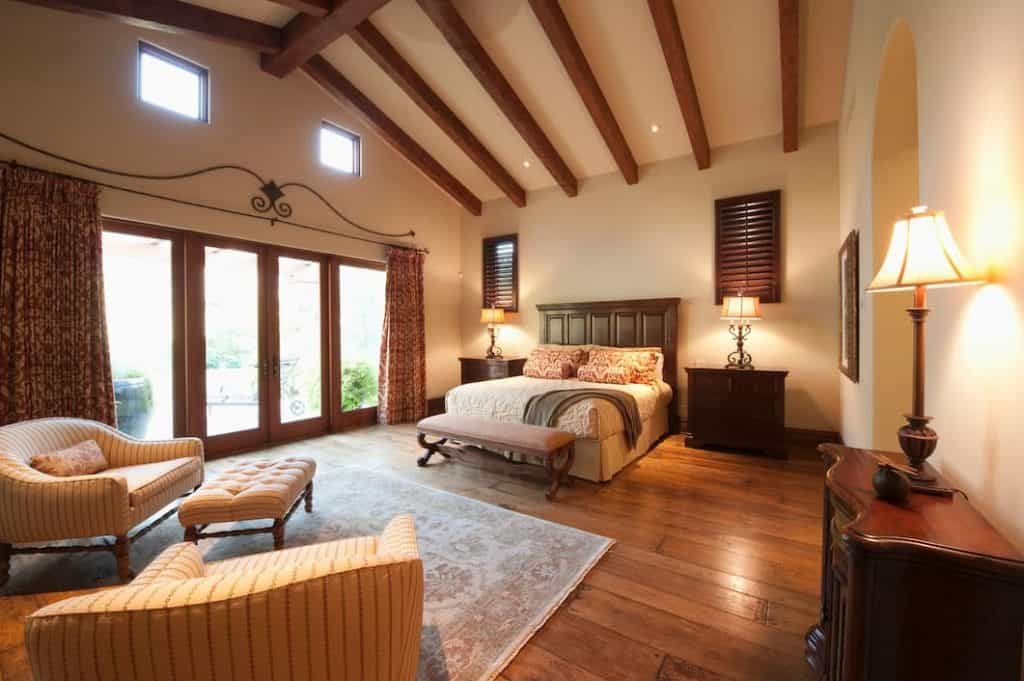
Beam Ceiling
This is found in corridors and hallways in commercial settings and dining and living rooms in residential settings.
Though a traditional kind, it is often considered a contemporary style of ceiling. Exposed beams, usually made from hardwoods, add a rustic yet classic look to any space.
Beam ceilings effortlessly complement different styles. However, with detailing involved, it could overwhelm a smaller space. Hence, space consideration is important for beam ceiling installation.
Cathedral Ceiling
You can find cathedral ceilings in many large living rooms, bedrooms, dining rooms and master bathrooms.
A variety of materials is used for making cathedral ceilings. Linear wood is a fantastic choice for this purpose.
Also called vaulted ceilings, these have got the name for their inverted V-shape. The tip of the V represents the highest point, from which, two sides slope down.
Though cathedral ceilings are beautiful, it presents challenges for homeowners and constructors due to their steep slope which makes it difficult to reach fixtures or paint. Architects prefer fastening methods and suspension loads for proper installation.
These ceilings also use a lot of energy. Moreover, if the angled frame is narrow, it will reduce ventilation in the space. Wood is the best option for this ceiling because the materia helps temperature regulation and reduce energy consumption.
Coffered Ceiling
Coffered ceiling is mostly done in high-end homes, libraries, hotels, and churches. These reflect a classic, aesthetic and more often, luxurious feel. It is more expensive than conventional ceilings and requires specialists’ intervention for installation.
This ceiling features inverted panels with its grid. Molding accentuates the entire structure. Commercial wood coffered ceiling designs use standard T-bar suspension grids, streamlining the entire process.
Coffered ceiling is an ideal option for a retro historical project.
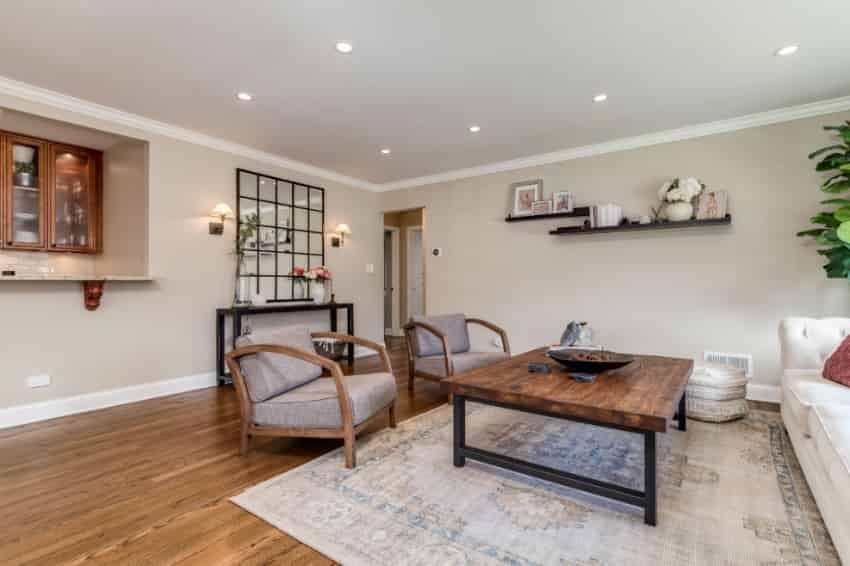
Conventional Ceiling
This type is very common. Conventional ceiling features standard drywall finishing. It’s made of low-cost materials and installation is super easy.
This type of ceiling is flat, plain and usually 8-9 feet high. It can easily fit typical construction material sizing.
Despite more ready accessibility, a room with too low ceilings can feel tight. If the ceiling is raised by a few feet, it will surprisingly create more space, improving its look and increasing the resale value of the house. However, upgrading a conventional ceiling is expensive. Hence, if you have such a plan, always consider the cost and resale value estimate.
Coved Ceiling
This is usually found in churches, theaters and formal rooms. For example, The Vatican houses exhibit one of the most famous and ornamental coved ceilings in the world.
Coved ceilings are concave with curved edges and without sharp angles between the walls and ceiling. Curved framing or molding is used to build coved ceiling starting from the top of the main wall and extending up to the ceiling.
The dome ceiling looks round and adds a gentler and softer vibe to your room. Moreover, coved ceilings make formal spaces look beautiful, serving an archway to build separation between rooms.
Builders usually charge extra for coved ceiling installation because the process involves intricacy on different levels. Hence, keep it in mind if you have a small budget.
Suspended Ceiling
A suspended ceiling, also referred to as a dropped ceiling, is installed below the existing ceiling, and hung from the metal grid.
These drop ceilings, built with acoustic ceiling tiles, let constructors conceal electrical, mechanical, plumbing and lighting fixtures above the exposed ceilings.
This is mostly used in commercial buildings, retail stores and offices, providing designers with amazing flexibility. Most wood-ceilings are suspended type and a cost-excellent option.
Tray Ceiling
Tray ceilings, also referred to as panned ceilings, feature multi-level ceilings, starting from one height and then dropping as levels are added. The ceiling layout looks like a tray and hence the name.
The flat ceiling on the tray’s outside is the highest part of the ceiling, surrounding the raised center.
These ceilings keep getting slightly lower with the added level or step surrounding the raised center. With the ceiling expanding outwards, it adds a dramatic, 3D effect to the space and makes a room look taller.
These ceilings usually have 2-3 levels and each level drops between 5-11 inches below its immediate upper level. You can add molding or trim as a fascia between two adjacent layers.
A tray ceiling works only if a building height is at least 8 feet. This is because dropped borders below this height are likely to make a space feel more closed-in.


